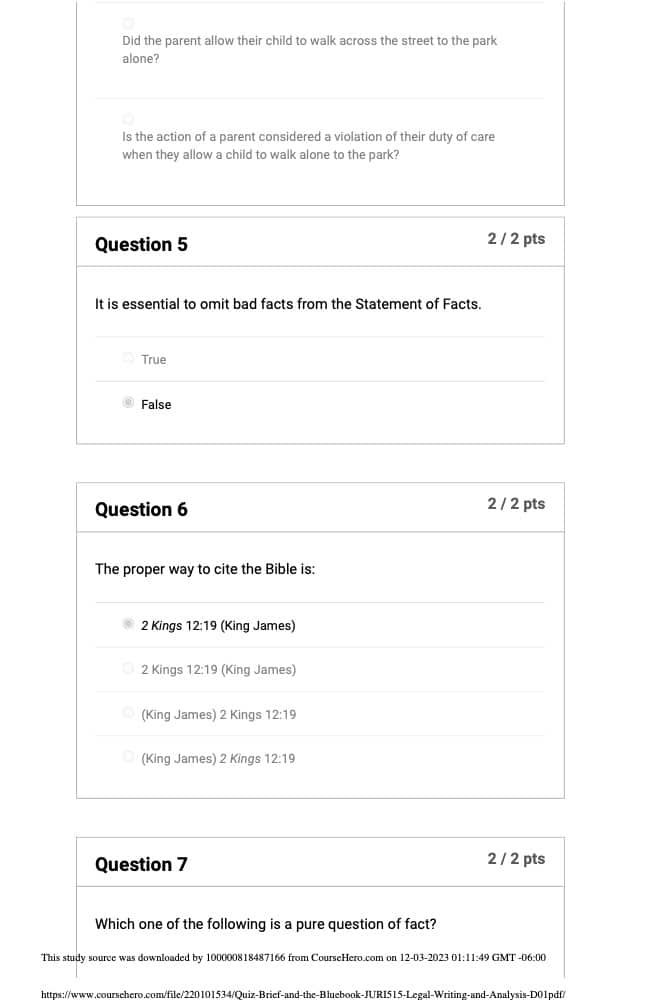JURI 515 Quiz 3
JURI 515 Quiz 3 Liberty University
JURI 515 Quiz Brief and the Bluebook
Covers the Textbook material from Module 5: Week 5 — Module 6: Week 6.
- The best way to find an effective theory of the case is by talking with:
- A trial court judge has full discretion about whether to apply the relevant rule of law.
- The most common organizational formats for fact statements are all of the following, except:
- Which one of the following is a pure question of law?
- It is essential to omit bad facts from the Statement of Facts.
- The proper way to cite the Bible is:
- Which one of the following is a pure question of fact?
- What type of review is an appellate court subject to in a pure question of law?
- Where doubt exists as to the proper standard, an appellant should argue for the least restrictive standard – a standard that maximizes the appellate court’s authority to overturn the challenged decision.
- Policy rationales justifying the “abuse of discretion” standard include all of the following, except:
- Legal citations should be:
- The parties’ names in a case citation should be underlined.
- The Statement Facts must cite the location of the fact in the record.
- Which one of the following is a mixed question of law and fact?
- Once you have provided one full citation to an authority, you may use a “short form” in later citations to the same authority.
- Any sentence that contains information from a case should be supported by a citation to that case.
- Where doubt exists as to the proper standard, an appellee should argue for the least restrictive standard – a standard that maximizes the appellate court’s authority to overturn the challenged decision.
- Match the following: Standard of Review Question of Fact Question of Law Statement of Facts Bluebook Short-form citation Period Id.
Set 2
- Which one of the following is a pure question of fact?
- The proper way to cite the Bible is:
- Which one of the following is a mixed question of law and fact?
- It is essential to omit bad facts from the Statement of Facts.
- Where doubt exists as to the proper standard, an appellant should argue for the least restrictive standard – a standard that maximizes the appellate court’s authority to overturn the challenged decision.
- Which one of the following is a pure question of law?
- With the exception of block quotations, quotations should be enclosed in quotation marks but not otherwise set off from the rest of the text.
- What type of review is an appellate court subject to in a pure question of law?
- The parties’ names in a case citation should be underlined.
- Policy rationales justifying the “abuse of discretion” standard include all of the following, except:
- Where doubt exists as to the proper standard, an appellee should argue for the least restrictive standard – a standard that maximizes the appellate court’s authority to overturn the challenged decision.
- The best way to find an effective theory of the case is by talking with:
- The Statement Facts must cite the location of the fact in the record.
- The most common organizational formats for fact statements are all of the following, except:
- Once you have provided one full citation to an authority, you may use a “short form” in later citations to the same authority.
- Black’s Law Dictionary is correctly cited:
- A trial court judge has full discretion about whether to apply the relevant rule of law.
- Match the following:
- Standard of review
- Question of fact
- Question of law
- Statement of facts
- Bluebook
- Signal
- Reporter
- Id
